In fact, curly hair is a crown of gorgeous that may abandon challenges. Perhaps one of the biggest challenges facing us curly-haired people is hydration. Curls can dry out, frizz up and break without enough moisture. If you wanted a breaking-all-the-rules guide to hydration for curly hair, here it is.
In this guide, we’re gonna take thru the science of curly manes, the best practices YOU gotta follow to keep those curls moisturized AND share with you some super actionable tips you can do to get those sad, DRY, limp curls back to the healthiest, bounciest, most vivacious state ever. If you’re a curly hair care newbie or looking to refresh your routine, this guide is for you.
how to hydrate curly hair by Select the Right Products
Sulfate-Free Hair Shampoo: A mild cleanser that won’t remove your hair’s natural oils.
Hydrating Conditioner: Markedly nourishes curls.
Leave-In: Top up your moisture + detangle throughout your day.
— Deep Conditioner: Once every week or bi-semi-finally for curls to add extra moisture.
Styling Creams, or Gels: Helps defy frizziness without stiffness or crunch.
– Light OILS (ie Jojoba): Boosts shine and seals in moisture without weighing hair down
Well-Washed Routine:
Wash Less Often: Curly hair is dry so, don’t wash as often as possible.
Not hot, nor cold, but warm water rinse: Help opened cuticles for hair to absorb products.
Conditioning Tool: Use on mid-length to ends on hair, while wet detangle with fingers or wide tooth comb
Flush Well: Ensure that all remnants of the product are completely flushed out.
Best Practices for Applications that Style:
Finger-Curling:Twisting over loops between fingers can give them definition.
– Drying: Dry off excess water using a microfiber towel to cut down on frizz.
Diffuser Drying: A diffuser applied on low heat helps dry curls evenly.
Protective Style: Find braids, twists, or a bonnet to help reduce friction and hold moisture while you sleep
Key So Keep in Mind That
Hair Porosity: Understand how your hair retains moisture to select the right products.
Heat Styling: And if you do use heat, protectant, then limit it.
Visit the salon at least once a month: Getting a trimming at least once a month helps in split ends and splits it more and less damage.
But why does curly hair need to be hydrated?
Due to its structure, curly hair is drier than straight hair by nature. The natural oils that the scalp makes, called sebum, have a much harder time moving down the twists and turns of each curl. This is why curls tend to feel dry, frizzy and brittle at their ends: They’re not getting the moisture they need. Leaving it on longer would dry out curly hair faster than it would on other hair types, because curly hair is more porous.
Why Stretch Out Curls Can Cause Serious Issues
– Frizz: Dry curls are more susceptible to frizzy elements that open up your curls, making them look dishevelled.
And that breaks: Without moisture, the hair shaft becomes weak, resulting in falling ends and breakage.
Dullness: Curls will not hold their natural shine and vibrancy without moisture.
Read on for how to hydrate curly hair the right way — because the first part of hydrating curls is knowing hydration.
What Your Curl Type Means
Before establishing an effective hydration routine, it is crucial to identify your curl type. Curly hair ranges from loose waves (Type 2) to tight coils (Type 4). Each type has unique needs:
Type 2: Wavy Hair
TEXTURE Loose, “S”-shaped waves
Hydration Musts: Lightweight picks that won’t slow down the waves.
Type 3: Curly Hair
– Texture: Stiff, springy curls.
Hydration: Curl-structuring creams & sealing butters.
Type 4: Coily Hair
Features: Firm, zig-zag coils.
Hydration Needs: Over hydration and sealing to avoid suffocation.
Knowing your curl type will help you decide the best products you should use, and the application method to follow for ultimate hydration.
Hydration Science: The Key Elements That Make Counters Moisture on Curly Hair
But, to truly hydrate curly hair, knowing about moisture is vital. There are two major functions to each hair moisturizing product:
Penetration
Glycerin, honey are humectants that act as penetrating moisturizers draw water in to the hair shaft. This is especially beneficial for high-porosity hair, which absorbs moisture but also releases it just as quickly.
Sealing
Sealing moisturizers like oils and butters create a barrier on the hair shaft to lock in moisture. These are great for low-porosity hair, which does not retain moisture easily.
Use a mix of penetrating and sealing moisturizers to keep your curls hydrated over time.
7 Methods To Wet Yourself Curly Hair
Use a Moisturizing Shampoo
It all starts in the shower with hydrated curls. Wash with a sulfate-free mild shampoo Look for moisturizing ingredients like:
Aloe vera
Coconut oil
Shea butter
Pro Tip: Shampoo only 1–2 times a week to avoid over-drying.
Condition, Condition, Condition
Conditioner is your best friend when it comes to hydrating curly locks. Apply conditioner generously from mid-lengths to ends after shampooing. Use a wide-tooth comb to detangle and to work the product into the hair.
For More Hydration: Try the squish to condish method. When you rinse, squeeze some water through your curls to make sure they drink in extra moisture.
Deep Condition Weekly
Deep Conditioner for Curly Hair – Winterize It Has high moisturizing & damage repairing properties.
How to Deep Condition:
Apply a hydrating hair mask on damp hair.
Next apply a plastic cap and let it process for 20-30 minutes.
Rinse with cool water to close the cuticle.
What Should Be In A Deep Conditioner:
Honey
Avocado oil
Keratin
Use the LOC or LCO Method
The LOC (Liquid, Oil, Cream) or LCO (Liquid, Cream, Oil) method is a proven scheme for locking in moisture in curly hair.
LOC Method:
Liquid: Apply a water soluble leave-in conditioner.
Oils: Seal moisture in with a natural oil like jojoba or argan oil.
Step 4: Cream: Link your curl pattern together using a cream.
LCO Method:
Liquid: Apply leave-in conditioner.
04/ Curl cream: Apply a curl cream to shape the curl.
Oil: Sealing with a light oil
Experiment with both techniques to learn what each enhances your curls.
Refresh Your Curls Between Wash Days
Between washes, curly hair is usually on the drier side, and that means re-freshing up those curls is essential.
How to Refresh Curls:
Mist your hair with a water-based leave-in conditioner or curl refresher spray.
Scrunch your curls lightly to bring back some curl.
Thin with a bit of oil or cream to retain some moisture.
Protect Your Curls at Night
It can also help keep that softness alive and well, and — let’s be honest — every curl (after 9 p.m.) wants a drink.
How to Protect Your Curls:
Apply a leave-in conditioner or hair oil before going to bed.
Put your hair in a silk or satin bonnet or on a silk pillowcase.
These materials reduce friction and help retain moisture, so you wake with hydrated, frizz-free curls.
Avoid Heat and Aggressive Chemicals
Heat styling tools and chemical treatments can deplete your locks of moisture, causing dryness and damage.
Curly Hair Care Tips:
Embrace your natural texture, and heat style less.
If you do heat, always, always heat protect.
Avoid harsh chemicals (sulfates and alcohol) from your hair products.
Best Products to Moisturize Curly Hair
Shampoo: SheaMoisture Coconut & Hibiscus Curl & Shine Shampoo
Sulfate-free
[P] Contains coconut oil and silk protein
Conditioner: DevaCurl One Condition Original
Ultra-hydrating
Weightless formula
Deep conditioner: TGIN Honey Miracle hair mask
With raw honey and olive oil
Repairs and moisturizes
Leave Leave-In Conditioner: Kinky-Curly Knot Today
Detangles and hydrates
Lightweight formula
Curl Cream: Cantu Shea Butter Moisturizing Curl Activator Cream
Defines curls
Seals in moisture
Oil: OGX Argan Oil of Morocco Renewing Oil
Nourishes and adds shine
Lightweight and non-greasy
Common Mistakes to Avoid
Overwashing
Wash your hair too frequently and you run the risk of stripping it of its natural oils, a condition that can render your curls dehydrated. Once or twice a week at most wash your hair.
Using Heavy Products
But using products that are too heavy can weigh down your curls and make them greasy.
Skipping Regular Trims
It means that your hair cannot retain moisture if you have split ends. Trims: Regular trims are a must (every 6-8 weeks) for healthy curls.
How to hydrate curly hair: Best Practices
Pre-Poo Treatments
A pre-shampoo (pre-poo) treatment just means putting oil or conditioner on your hair before you shampoo it. It also keeps your curls from drying out due to shampoo.
How to Pre-Poo:
Massage coconut oil, olive oil or a moisturizing conditioner into dry hair.
Let it sit for 20-30 minutes and shampoo.
Rice Water Rinse
Rice water is full of the amino acids and vitamins that strengthen and hydrate hair.
How to Use Rice Water:
Rinse ½ cup rice, then cover it in 2 cups water and soak for 30 minutes.
Use it as a final rinse after conditioning.
DIY Hydrating Hair Masks
Deep conditioning hair masks can also be made from natural ingredients.
1 Honey and Banana Mask
– Mash 1 ripe banana, add 2 tbsp of honey to it and mix the ingredients well together to make a paste.
Get it wet hair, leave on for 30 minutes et rinse
Recipe No 2: Avocado and Yogurt Mask
Mash together 1 ripe avocado with ½ cup of plain yogurt.
Rub into hair and wait 20-30 minutes before washing out.
Conclusion
How To Moisturise Curly Hair: Your Steps To Soft, Healthy & Defined Curls Get your curl game strong with these steps and the right products. Just keep in mind that consistency is key — drink water, shield your kinks and own your texture.
What are some of your go-to curly hair hydration hacks? Let us know below in the comments, and just in case you need any more help, see our topical suggestions to make sure your curls are in check!
This guide will not only teach you how to hydrate curly hair, but it will teach you how to build the best routine to keep your curls flourishing! Happy hydrating!
From Dry to Hydrated: Top 20 FAQs For Curly Hair Hydration
Moisturizing curly hair can seem like a Herculean feat. To help you with your mission to hydrate curly hair, we compiled the top curl hydration FAQ’s with detailed answers.
Why is curly hair so dry?
Curly hair is drier because the natural oils (sebum) on a scalp cannot travel easily down the twists and turns of every curl. It makes it much harder for the ends to retain moisture, which leads to dryness, frizz and breakage. Curly hair is also typically more porous, meaning it will lose moisture much more rapidly than straight hair.
How many times a week should I moisturize my curly hair?
Curly hair needs hydration as part of a daily or every-other-day routine. The clean, delicate hair that belongs to what you’ve got needs a leave-in conditioner or pump curl refresher to help it retain moisture. Apply a deep conditioner weekly for added hydration, and adjust based on the health of your strands — if it feels dry or brittle it needs hydration more regularly.
How to Hydrate Curly Hair at Night?
MOISTURIZE CURLY HAIR OVERNIGHT:
Use leave-in conditioner or light oil on damp or dry hair.
Focusing on the mid-lengths and ends.
— Sleep with a silk or satin scarf or pillowcase to protect your curls, which creates little friction and helps retain moisture.
Should you use coconut oil on curly hair to moisturize?
Curly hair love coconut oil when it comes to oils. High in fatty acids and vitamins, it penetrates the hair shaft to impart moisture and limit protein loss. But don’t overdo it — too much can weigh your curls down. Apply it as a pre-wash before you hop in the shower, or stir it into your deep conditioner.
Difference between LOC and LCO method?
LOC (Liquid, Oil, Cream) and LCO (Liquid, Cream, Oil) are two methods of sealing moisture into curly hair.
LOC Method: Leave-in conditioner, oil, cream. Ideal for high-porosity hair.
LCO Method: Leave-in, cream, oil. Better for low-porosity hair.
How to prevent frizz in curly hair?
Frizz is often an indicator of dryness. To prevent frizz:
Deep condition them regularly so that they stay well moistened.
Use serum or anti-frizz creams
Sleep on a silk or satin pillowcase, which causes no friction while you sleep죠
On nonwash days, use a water-based leave-in conditioner to refresh your curls.
Can I wash curly hair with regular shampoo?
Most shampoos are sulfate-based so they remove all the natural oils in your hair. When it comes to curly wear, it is a major culprit in dryness and damage. For curly hair, use sulfate-free shampoos, which will cleanse without stripping moisture.
What ingredients should I look for in hydrating products?
Look for hydrating ingredients like:
It nourishes and seals in moisture, which helps make curls soft.
Aloe Vera: Offers hydration without weight.
– Glycerin: Pulls moisture from air into your hair.
– Honey: A humectant; keeps moisture locked in.
Natural oils: Argan, jojoba and coconut oils offer moisture and seal the hair cuticle.
How do I revitalize my curls before washing them?
To refresh your curls:
Hold it up with a water-based leave-in conditioner or curl refresher spray and mist your hair down.
Scrunch your curls lightly on the fly to help them reform.
Layer on a bit of oil or cream to lock in hydration.
Can curly hair get hydration from light weight products?
Yes, use lightweight products, for example, water-based leave-in conditioners, mousses and gels. For fine or easily weighed down curls, avoid the heavy butters or creams.
How do you know your curls might be thirsty?
Here are a few symptoms of dehydrated curly hair:
Dry, brittle strands.
Excessive frizz.
Dull and undefined.
Tangles and breakage.
How do you detangle curly hair without it losing moisture?
To detangle curly hair:
Use a wide-tooth comb, or your fingers.
Apply leave-in conditioner or detangling spray to damp hair.
Begin at the ends and work your way up toward the roots to minimize breakage.
Does this mean that protein treatments are never going to hydrate curly hair?
Protein treatments can fill out and fortify curly hair but don’t take the place of hydration. Using protein treatments sparingly (every 4-6 weeks), followed by a deep conditioner to reintroduce moisture back into your hair.
How to moisturise low-porosity curls?
Low-porosity hair has more difficulty absorbing moisture. To hydrate it:
Choose light, water-based products.
Applying heat (a warm towel or steamer) while deep conditioning helps open the cuticle.
– Oily or butter-like solutions that can seal hair strands.
What’s the best way to hydrate high-porosity curly hair?
High-porosity hair sips up moisture but flakes it off just as fast. To hydrate it:
Thick and rich products like butters and oils.
Locking in moisture (LOC or LCO Method)
–Do not over wash, it can dry.
Does aloe vera hydrate curls?
Yes, aloe vera is a humectant meaning it draws moisture to your hair. Use aloe vera gel, pure aloe vera gel and aloe vera containing products for moisture and definition of your curls.
How can I ensure my curls are moisturised and hydrated in the winters?
‘Tis the season that can wreak havoc on curly hair. To hydrate your curls:
Deep condition weekly.
Layer heavier creams and oils on top to seal in moisture.
Protect your hair with silk or satin hats or silk scarves.
Can you have too much moisture in curly hair?
You could be over-hydrating (or experiencing hygral fatigue), which means your hair is taking on too much water, causing it to become fragile and stretchy. Retain the strength by merging hydration with a protein treatment.
What do you do with curly hair after swimming?
Chlorine and saltwater can be drying on curly hair. After swimming:
Find fresh water ASAP to wash out your hair.
Use a clarifying shampoo to strip chlorine/salt buildup.
swipe for a deep condition to quench
How do I hydrate my curls without build-up?
To avoid buildup:
Look for lighter, water-based formulas.
– Monthly Clarifying with Sulfate-Free Clarifying Shampoo
Use different products (max 3 per day so they can rotate) to avoid buildup of carbon.
Conclusion
Moisturizing curly hair shouldn’t be a struggle. With the right curls know-how, the right products and a good routine, you can have easy, beautiful, healthy curls. Tell us other questions or tips you have in the comments below!
How to Moisturize Curly Hair: 10 Effective Tips for Gorgeous Curls
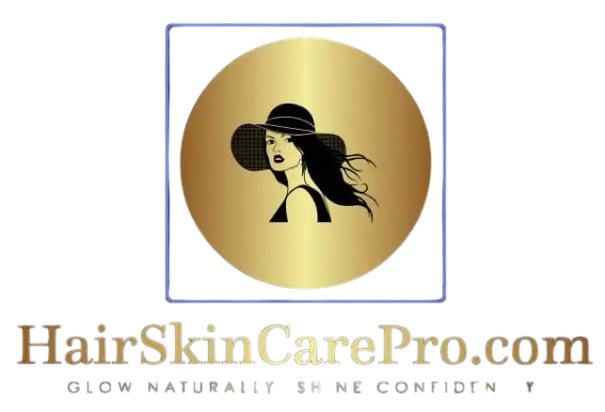
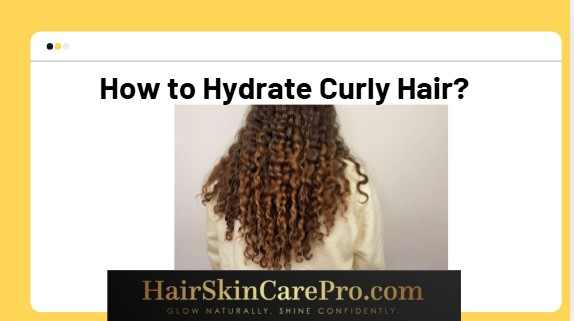
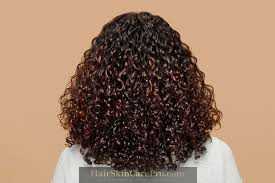
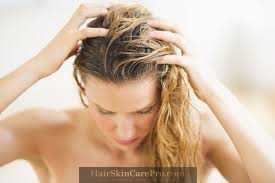
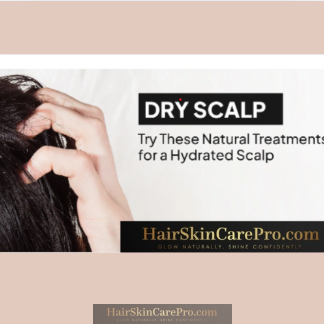
[…] How To Hydrate Curly Hair: Your Definitive Guide To Soft, Healthy, Defined Curls […]